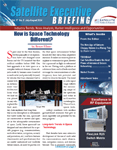Two New Research Reports Focus on the African Broadband Market
London, UK, August 29, 2014--Reportbuyer.com has added two new market research reports on the African broadband market. The first is entitled "Africa - Internet and Fixed Broadband Market" and the other is called "Africa - Mobile Broadband Market." "The reports highlight improved international connectivity reducing internet access pricing for consumers across the continent.
A number of new international submarine cable links connecting nations on Africa's east and west coast have considerably improved internet access to the continent. Terrestrial links have enabled land-locked countries to benefit from this connectivity by dramatically reducing the cost of services for telcos and customers alike. The new WASACE cable, linking Brazil and other South American landing points, connects directly with Angola, with branch lines to Nigeria and South Africa.
In addition to these developments, there continue to be improvements to the Central African Backbone (CAB), a $215 million program funded by the World Bank and the African Development Bank to build fibre-optic infrastructure serving 11 countries in the Central African region.
Additional international bandwidth has prompted telcos to invest in local backbone infrastructure upgrades to extend networks to population centres. Countries which had previously relied on satellite connectivity have seen wholesale access prices tumble by as much as 90% in recent years.
There have also been significant investments in building local Internet Exchange Points to reduce dependence on international connectivity for local internet services, so lowering the cost of developing local hosting and application development. A number of new IXPs, including that in Namibia (opened in May 2014) have been supported by the African Internet Exchange System, an African Union project implemented by the Internet Society. This wide-ranging program aims to have 80% of African users' internet traffic exchanged within Africa by 2020.
Despite these encouraging developments, most investment at the local level is handicapped by the poor condition of fixed-line infrastructure in many parts of various countries, particularly in rural areas which also suffer from no or intermittent electricity supply. As a result, many of the local improvements in internet access seen in recent years have been confined to the principal cities. Nevertheless, in adapting to these restrictions telcos serving rural areas have elected to invest in mobile infrastructure to provide voice and 3G-based data services.
There is limited Fibre-to-the-Premise (FttP) infrastructure, mainly serving select areas of some cities, though the sector continues to develop.
Top African internet user market penetration – 2014
Morocco | 59%
Tunisia | 48%
Egypt | 52%
Mauritius | 60%
Nigeria users | 55%
Kenya users | 60%
South Africa | 53%
(Source: BuddeComm data)
Mobile data as well as third and fourth generation (3G and 4G) mobile broadband services are covered in a separate report: Africa – Mobile Broadband, Data and Mobile Media Market.
The African region is witnessing one of the strongest increases in mobile data use in the world. Forecasts suggest that mobile internet traffic across Africa will double between 2014 and 2015, and will see a 20-fold increase by the end of the decade. Services based on 3G networks will be dominant within three years, replacing older and more limited 2G technology. By 2020, about three-quarters of all mobile connections will be on 3G or 4G, and thereafter the focus for operators will be on making use of released spectrum to expand the reach of LTE networks beyond the major cities.
This growth in traffic is being spurned on by the maturing social media sector, data-rich applications and mobile video. The region is also hosting a new wave and locally built cheap smartphones which is making such devices more readily available to a larger proportion of the population.
Another key facilitator is mobile banking and m-commerce. Mobile banking has taken root in a number of markets, particularly in Kenya, Nigeria, South Africa, Rwanda and Tanzania. This has supported a fast developing m-commerce sector which is enabling mobile-based transactions, remittances and payments between a growing number of participating banks. Such facilities across borders are making m-commerce a viable international service within the region.
Regulators and governments have encouraged improvements in national backbone networks, as well as international connectivity, to enable operators to increasing traffic volumes as well as customer expectations of a reliable service. These developments are providing the bandwidth needed to connect millions of additional citizens to the internet, while the cost of services has plummeted as networks are no longer constrained by expensive satellite links.
To encourage improved services, quality of service parameters in a number of countries in the region have been tightened during the last two years, which have obliged network operators to upgrade networks and improve services offered.
Broadband based on DSL technology remains limited in most markets, since it is offered by telcos on fixed-line networks which are generally underdeveloped. As such, the future of connectivity for many markets in the region, particularly in rural and semi-urban areas, lies in mobile broadband. The cost of mobile broadband, traditional far more expensive that limited fixed-line alternatives, is being driven down by the combination of network upgrades and the pressure of market competition.
Having introduced HSPA+ technology, in recent years many operators, particularly the main players including Bharti Airtel, Millicom, Etisalat, Orange and MTN, have launched or trialled a number of commercial LTE networks. Various regulators have worked to address the shortfall in available spectrum by enabling spectrum refarming and releasing digital dividend spectrum for mobile broadband.
Given these rapid developments, mobile broadband and data services are beginning to contribute a higher proportion of African cellcos' overall revenue. SMS remains a leading contributor to data revenue, but in coming years operators will expect greater returns from data-rich services carried on upgraded networks.
3G networks remain dominant in most African markets; commercial LTE services gain wider footprint; CDMA2000 1x EV-DO deployed in around 30 African countries, offering up to 3Mb/s; mobile broadband accounting for up to 90% of all broadband connections in several markets; newly built international fibre optic cables and national backbone networks supporting broadband growth; m-banking services gaining -Pesa mobile banking service in Kenya carries about 20% of the countrys entire GDP.
Read the full reports:
Africa - Internet and Fixed Broadband Market
Africa - Mobile Broadband Market






